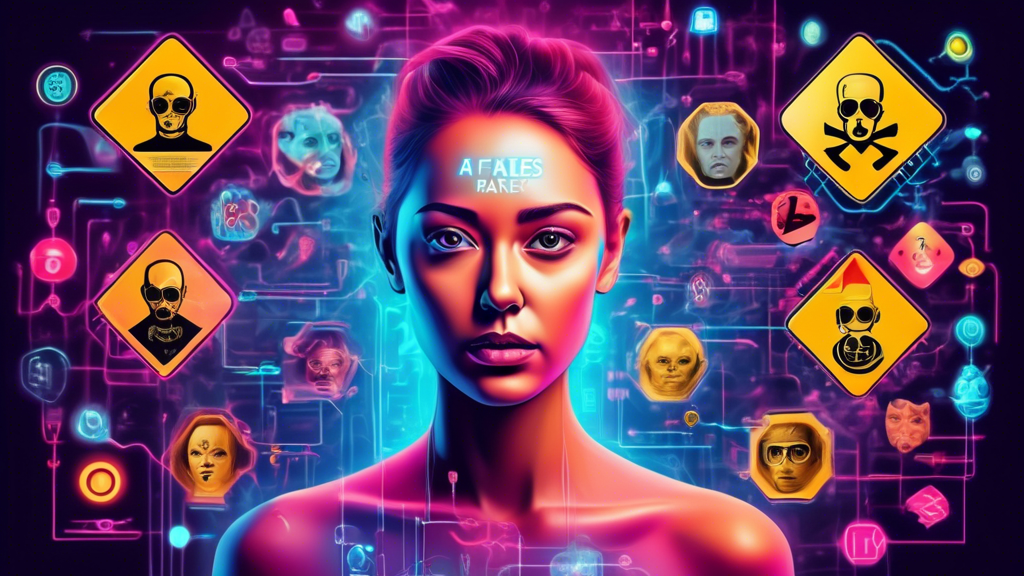In the era of rapid technological advancement, artificial intelligence (AI) stands out as a revolutionary force. Among its myriad applications, deep fakes have garnered both fascination and concern. Understanding the risks associated with deep fakes is crucial as we navigate this evolving digital landscape.
What are Deep Fakes?
Deep fakes are media—typically video or audio—altered using AI algorithms to create hyper-realistic but entirely fake content. They often involve superimposing faces onto bodies or manipulating audio to make it sound like someone is saying something they did not. This technology leverages deep learning, a subset of machine learning, which uses neural networks with many layers to process data.
The Evolution of Deep Fake Technology
Initially, deep fake technology required substantial computational power and expertise. Over time, however, accessible software tools have democratized this capability. Apps and online platforms now allow almost anyone to create convincing deep fakes with minimal technical know-how. This widespread accessibility has significantly increased the potential for misuse.
The Risks of Deep Fakes
Deep fakes pose several risks across different domains:
1. Misinformation and Propaganda
One of the most significant dangers is the potential for spreading misinformation. Deep fakes can be used to fabricate speeches by political leaders, falsely implicate individuals in crimes, or generate persuasive but entirely bogus news clips. Such fabrications can undermine public trust, fuel political polarization, and even incite violence.
2. Personal Privacy and Reputation
Individuals’ privacy and reputations are at significant risk. Deep fakes can be used in cyberbullying, blackmail, or revenge porn, causing severe personal and emotional harm. The victims often face immense challenges in disproving these falsified depictions, leading to lasting damage to their personal and professional lives.
3. Financial Fraud
Financial institutions and businesses are not immune to the threats posed by deep fakes. Cybercriminals can use manipulated audio and video to perpetrate fraud, deceive customers, or manipulate stock prices. The ability to convincingly impersonate executives or employees can lead to significant financial losses.
4. Legal and Ethical Challenges
The legal framework to address deep fakes is still evolving. Traditional laws around defamation, fraud, and privacy are being tested by this new technology. Policymakers and legal experts are grappling with the challenge of crafting legislation that balances technological innovation with protections against misuse.
Combating the Threat of Deep Fakes
Addressing the risks of deep fakes requires a multi-faceted approach:
1. Technological Solutions
Researchers are developing advanced detection algorithms to identify deep fakes. These solutions often involve analyzing inconsistencies in the media, such as unnatural eye movements or irregularities in audio frequencies. Collaboration between tech companies, academic institutions, and governments is essential to enhance these detection capabilities.
2. Public Awareness
Educating the public about the existence and dangers of deep fakes is crucial. Media literacy initiatives can empower individuals to critically assess the authenticity of the content they consume and share. Awareness can reduce the potential impact of fraudulent media by fostering a more discerning audience.
3. Legislative Measures
Enacting robust legislation to deter the creation and dissemination of malicious deep fakes is vital. Laws mandating transparency, such as requiring clear labels for content altered by AI, can help mitigate some risks. Additionally, there should be stringent penalties for those who use deep fakes for harmful purposes.
4. Ethical Guidelines
Creating and promoting ethical guidelines for the use of AI and deep fake technology can ensure responsible innovation. Organizations and developers should commit to principles that prioritize human dignity, privacy, and accountability.
And In The End….
Deep fakes, as a product of AI advancements, represent a double-edged sword. While they offer intriguing possibilities, the associated risks cannot be overlooked. By understanding these risks and implementing comprehensive strategies to combat them, we can harness the benefits of AI while safeguarding societal values and individual rights.
Top Music Industry Trends: Latest News and Updates


